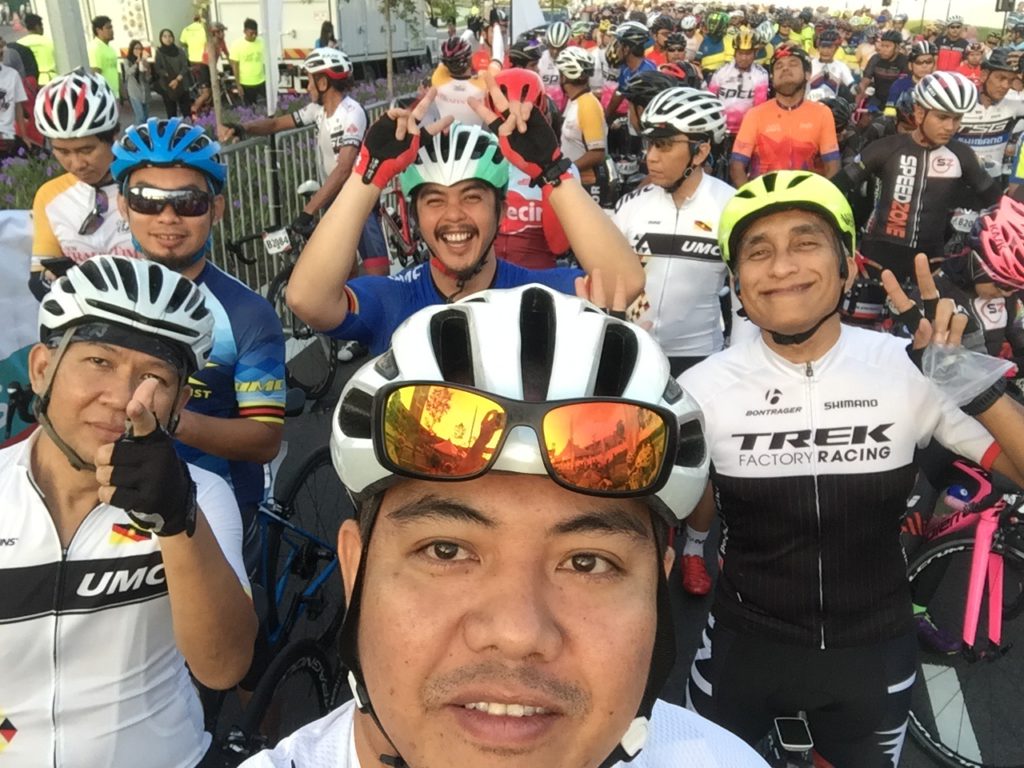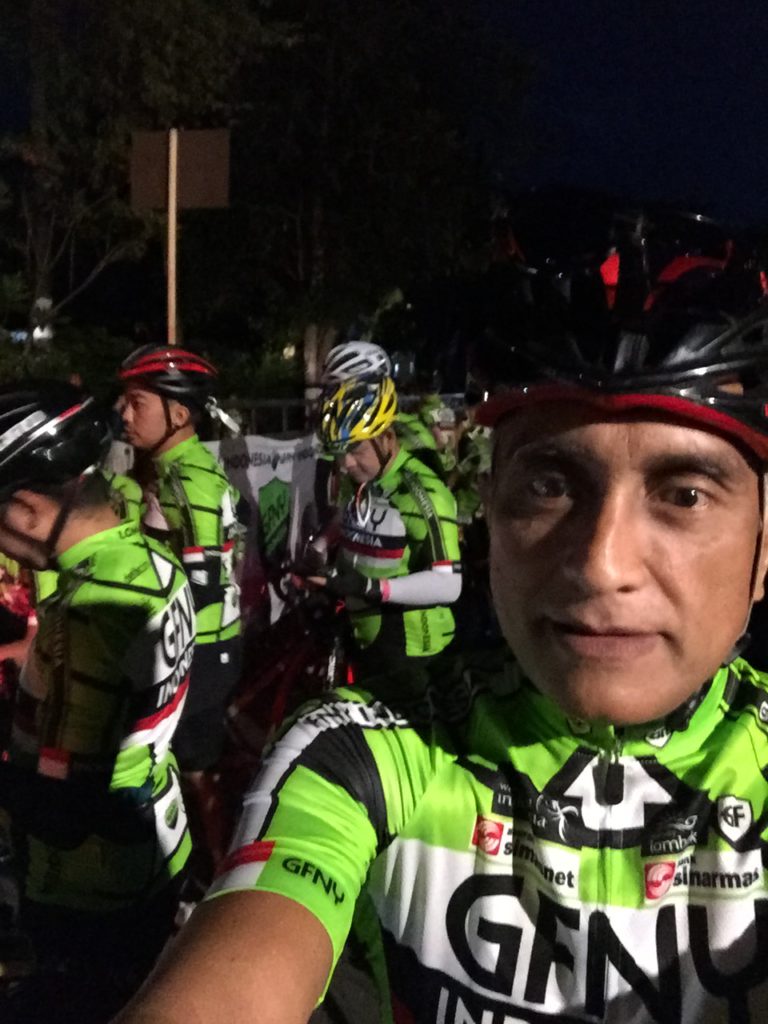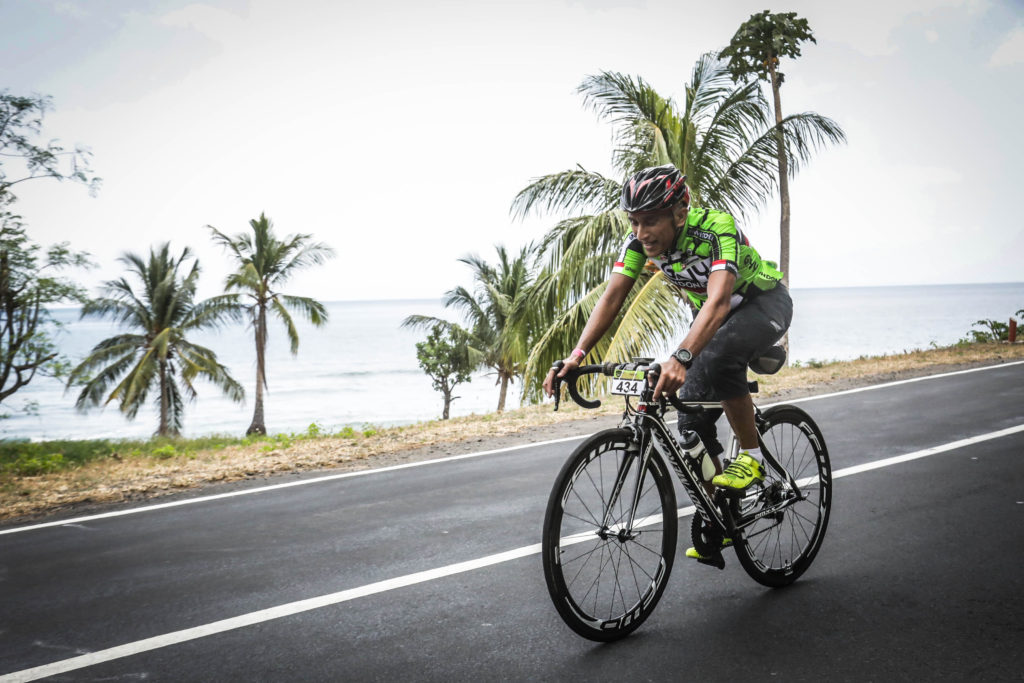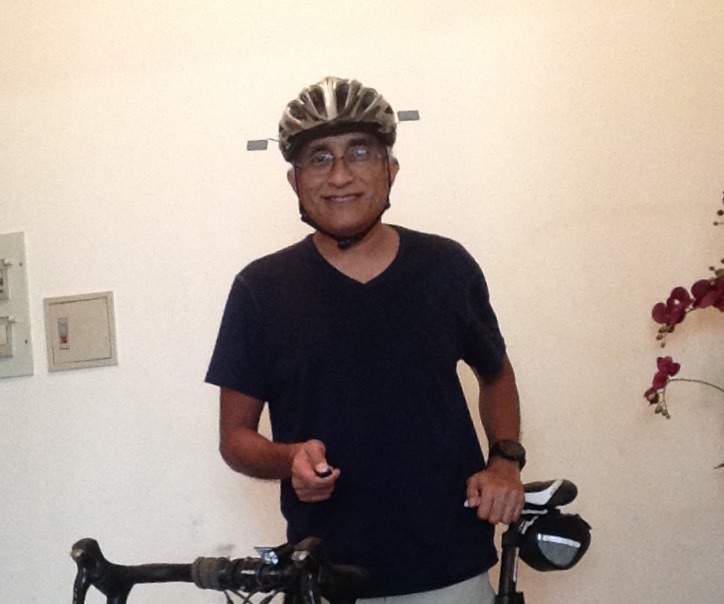In road bike riding, the attire that we wear can greatly enhance our safety. Unfortunately, a lot of times the clothes that we wear while cycling is prioritised by the way it looks. Nonetheless, if the right attire is chosen, they can become bicycle safety clothing that also looks good!
The attire that we wear
Generally, all the items that we put on while cycling, can potentially help enhance safety. What would this cover? Well, obviously the first consideration would be on your jersey or shirt. However, it is not only that; think as well of your shorts or pants, your shoes and socks, your gloves, as well as your helmet. Additionally, there is other supporting attire that can be worn to further enhance safety by making you more noticeable.
Make sure that what you wear is comfortable and snug where needed. It has to be comfortable to ensure no distractions while cycling due to constrictions to your clothing. I like my clothes a bit tight, but not to the point I am bursting at the seams! Others might prefer looser articles, which is good too, as comfort will allow you to focus on road safety instead of being distracted by the tightness of your clothes! The exception would be for helmets of which more on this later.

The jersey
Let’s start with the single most obvious attire – your jersey or shirt. Common sense dictates that this must be bright and noticeable from afar. Do note that some jerseys while appearing dark may also contain bright luminous stripes which play off against the contrast of the dark shirt. In addition, a lot of the darker jerseys would have bright patterns or wordings, again to contrast with the dark background and helping to make you much more noticeable. Thus do not automatically discount dark jerseys, but instead look out for the bright segments of the jersey, and decide if it would sufficiently attract the attention of motorists.
In addition, do note that white jerseys may be overwhelmed with darker colours, thus making it less obvious.
Do also consider the timing of your ride; if you like night riding, would a dark jersey with luminous stripes be sufficient?

In short, when choosing your jersey or shirt, understand how it will look from afar and when you wear them – as mentioned look out for the things that makes it brighter and more obvious to the motorist at that point in time. Some examples of colours combinations which may help to enhance your visibility: white (always good) background against any other colour, bright green background against dark red (which I think reminds the motorist of traffic lights thus would subconsciously be more alert), simple bright colours with minimal wordings/patterns.
The shorts
Of all the attire that we wear, we probably consider the bicycle shorts the least when it comes to bicycle safety clothing. Due to them generally being black with perhaps some patterns, it is easy to neglect this when it comes to safety. However, if the right ones are chosen, they can definitely help in attracting attention and enhancing safety.
There are a big number of brightly coloured shorts available in the marketplace, and these continue to grow in popularity. However, if you feel uncomfortable with colourful shorts and prefer darker colours, use the same approach as with your jersey – look for those which will attract attention by having contrasts in the colours despite the darker background.
I personally use black shorts but with a secondary stripe of a bright colour, while interspersed with white letters/wordings.
Other items (think socks, shoes, gloves, helmets)
Here we come to the portion of bicycle safety clothing which perhaps we do not really consider seriously for safety enhancement. Nonetheless, choosing the right articles here can definitely help. Yes, we will be looking at shoes, socks, gloves and of course the helmet.
Again, as with the same philosophy as the preceding sections, always keep in mind the visibility of these items. Choose brighter colours or look for contrasts which highlights the brighter portions against the darker background.
With gloves there is also the added consideration when you use hand signals to ensure the way your hand is directed will maximise and emphasise the brighter portions of the gloves. The portion of the glove used for gripping is generally darker, while the portion on the back of your hand is brighter – so make sure the back of your hand is facing the back when doing turn signals to approaching motorists from the rear.

With shoes and socks, look out for brighter pairs or those with contrasts or illuminating stripes. In particular the emphasis would be on the rear portion of your shoes as that will be the first part of your shoes approaching rear motorists can see from afar.
For helmets, being the highest point of your body, it would be good to really maximise visibility, making sure you stand out. With helmets, besides bright colours or contrasts, look out for points or areas on your helmet for luminous decals. With its hard surface, the helmet provides opportunity for bright areas of luminous decals and/or colours.
The helmet however is needed to be worn snugly – no compromises. It also has to be of the right size for your head, and there is also an adjustment for the crown of your head which needs to be tight and not allow much lateral movement. In addition, the strap needs to be adjusted so that only one finger (some advocate two fingers for lesser constriction) can be slotted in tightly between your strap and your chin.
Still other items
There is a growing trend of ‘wearing’ lights and/or using bright safety vests over your jersey or shirt. These items can really make you obvious and stand out. However note that some lights are meant for night use, where they will be much more visible. If you ride more during the daytime as opposed to early morning or night, do try to understand the right usage conditions for the lights and select the appropriate ones. Lights for daytime use will tend to be brighter.
How does one ‘wear’ a light? Well, generally one would use the small lights or blinkers used at the rear of the bike, and instead of strapping it to your seatpost you can strap it through the holes of your helmet, thus installing lights on your helmet. I have also seen cyclists wearing them as watches, thus helping attract attention especially when making hand signals.
Luminous vests are widely available for runners/joggers, but more cyclists are also adopting this safety wear as a normal part of bicycle safety clothing! Some vests even have blinking led lights!

Wrap-up
As always, safety is common sense and when used in context of clothing and other attire, brighter is always better! Also put emphasis on comfort while making sure your helmet is snug on your head. Consider too additional items which can make you even more obvious from afar such as safety vests.
Until my next post, for which I plan to talk about bicycle safety for kids, stay safe cycling and ride on with confidence!


Great safety tips for biking! I commute mostly by bike and going in in the morning traffic is always risky wit all the busy cars and pedestrians bouncing around. The most important safety gear for myself is definitely the helmet. Fortunately I haven’t had the chance to test it in practice but they do save lives. The second one is biking glasses. My eyes get wet when it’s windy and cold and you can’t really pedal safely if you can’t see where your going! Third is a high power lamp. It get’s dark, like seriously dark here in Finland during the fall and winter and it’s actually mandatory to have a light on your bike when it’s dark. During winter snow tires with studs are a must! Enjoyed reading your article, keep up the good work!
Thanks Jukka! I actually use 2 lamps in very dark conditions (2×80 lumens) and are also very effective during the day to attract attention. The brighter ones are a bit heavier though if you worry about weight! I cycle in Malaysia & South East Asia – thus we don’t need studs (nice weather all year round!), but this is something I will look into.